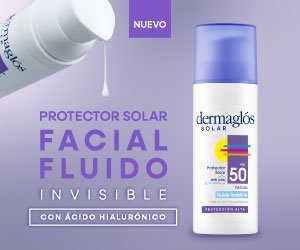Capillaroscopic findings in patients with systemic sclerosis and its relationship with clinical manifestations and complementary exams
Keywords:
capillaroscopy, systemic sclerosis, sclerodermiform patternAbstract
Background: systemic sclerosis (SS) is a rare connective tissue disease in which vascular injury and fibrosis are the major mechanisms in its pathogenesis. This can be appreciated on nailfold capillaroscopy.
Objectives: 1. To describe the characteristics of nailfold capillaroscopyin SS patients. 2. To classify them according to the different capillaroscopic patterns. 3. To relate them with clinical manifestations, alterations in the laboratory and other complementary examinations.
Design: cross-sectional descriptive study.
Materials and methods: sixteen patients who fulfilled the ACR/EULAR 2013 criteria for SS were examined. Capillaroscopy images were taken with a handheld dermoscope.
Results: on nailfold images we found enlarged capillaries (100%), microhemorrhages (100%), tortuous capillaries (93,33%), giant capillaries (86,67%), disorganization of the vascular array (80%), capillary loss (40%), avascular areas (46,67%) and bushy capillaries (13,33%). Puffy fingers were associated with enlarged capillaries and avascular areas were associated with sclerodactyly. All patients showed sclerodermiform pattern (SD): initial (53,33%), active (33,33%) or late (13,33%). The active pattern was related to a less than 3 years disease and negative anticentromere antibody; in contrast to the antibody positivity which was associated with the initial pattern. The late pattern was linked to the presence of calcinosis, telangiectasias and a disease of more than 3 years. Bushy capillaries corresponded to the presence of calcinosis and telangiectasias.
Conclusion: we emphasize the role of capillaroscopy as a non invasive tool that allows to estimate the course and prognosis of SS.
References
I. Maldonado Vélez G, Ríos Acosta C. Utilidad de la capilaroscopia en esclerodermia. Rev Arg Reumatol 2016;27:40-46.
II. Shenavandeh S, Haghighi MY, Nazarinia MA. Nailfold digital capillaroscopic findings in patients with diffuse and limited cutaneous systemic sclerosis. Reumatologia 2017;5:15-23.
III. Yalçinkaya Y, Adin-Cinar S, Artim-Esen B, Kamali S et ál. Capillaroscopic findings and vascular biomarkers in systemic sclerosis: association of low CD40L levels with late scleroderma pattern. Microvasc Res2016;108:17-21.
IV. Dogan S,Akdogan A,Atakan N. Nailfold capillaroscopy in systemic sclerosis: is there any difference between videocapillaroscopy and dermatoscopy? Skin Res Technol2013;19:446-449.
V. Chojnowski MM, Felis-Giemza A,Olesińska M. Capillaroscopy - a role in modern rheumatology. Reumatologia 2016;54:67-72.
VI. Juanola X, Sirvent E, Reina D. Capilaroscopía en las unidades de reumatología. Usos y aplicaciones. Rev Esp Reumatol 2004;31:514-520.
VII. Gómez M, Urquijo P, Mela M, Pittana P. Capilaroscopía periungueal. Arch Argent Dermatol 2011;61:197-202.
VIII. Muroi E,Hara T,Yanaba K, Ogawa F,et ál. A portable dermatoscope for easy, rapid examination of periungual nailfold capillary changes in patients with systemic sclerosis. Rheumatol Int2011;31:1601-1606.
IX. Arana-Ruiz JC, Silveira LH,Castillo-Martínez D, Amezcua-Guerra LM. Assessment of nailfold capillaries with a handheld dermatoscope may discriminate the extent of organ involvement in patients with systemic sclerosis. Clin Rheumatol 2016;35:479-482.
X. Hughes M,Moore T,O’Leary N. A study comparing videocapillaroscopy and dermoscopy in the assessment of nailfold capillaries in patients with systemic sclerosis-spectrum disorders. Rheumatology2015;54:1435-1442.
XI. Senet P. Le dermatoscope peut-il remplacer le capillaroscope? Ann Dermatol Venereol 2017;144:331-332.
XII. Bergman R, Sharony L, Schapira D, Nahir MA, et ál. The handheld dermatoscope as a nail-fold capillaroscopic instrument. Arch Dermatol2003;139:1027-1030.
XIII. Beltrán E, Toll A, Pros A, Carbonell J, et ál. Assessment of nailfold capillaroscopy by X30 digital epiluminescence (dermoscopy) in patients with Raynaud phenomenon. Br J Dermatol 2007;156:892-898.
XIV. Hasegawa M. Dermoscopy findings of nail fold capillaries in connective tissue diseases. J Dermatol 2011;38:66-70.
XV. Cutolo M, Pizzorni C, Sulli A. Capillaroscopy. Best Pract Res Clin Rheumatol 2005;19:437-452.
XVI. Camargo CZ,Sekiyama JY,Arismendi MI, Kayser C. Microvascular abnormalities in patients with early systemic sclerosis: less severe morphological changes than in patients with definite disease. Scand J Rheumatol2015;44:48-55.
XVII. CatalánEB, Ivorra JAR. La capilaroscopía en la esclerodermia, dermatomiositis/polimiositis y enfermedad mixta del tejido conectivo. Semin Fund Esp Reumatol 2010;11:17-23.
XVIII. Chang P, Argueta TG, Cohen SabbanEN, Anzueto E.Manifestaciones del aparato ungueal en las enfermedades del colágeno: reporte de 43 casos. Derma Cosmética y Quirúrgica2016;14:270-280.
XIX. Nitsche A. Raynaud, úlceras digitales y calcinosis en esclerodermia. ReumatolClin 2012;8:270-277.
XX. Moinzadeh P, Denton CP, Krieg T, Black CM. Esclerodermia. En: Fitzpatrick TB, Goldsmith LA, Katz SI, et ál. Dermatología en Medicina General, 8.ª ed. Editorial Médica Panamericana, Madrid, 2014:1942-1956.
XXI. Avouac J, Vallucci M, Smith V, Senet S,et ál. Correlations between angiogenic factors and capillaroscopic patterns in systemic sclerosis. Arthritis Res Ther 2013;15:R55
Downloads
Published
Issue
Section
License
Copyright (c) 2018 Argentine Society of Dermatology

This work is licensed under a Creative Commons Attribution-NonCommercial-NoDerivatives 4.0 International License.
El/los autor/es tranfieren todos los derechos de autor del manuscrito arriba mencionado a Dermatología Argentina en el caso de que el trabajo sea publicado. El/los autor/es declaran que el artículo es original, que no infringe ningún derecho de propiedad intelectual u otros derechos de terceros, que no se encuentra bajo consideración de otra revista y que no ha sido previamente publicado.
Le solicitamos haga click aquí para imprimir, firmar y enviar por correo postal la transferencia de los derechos de autor













